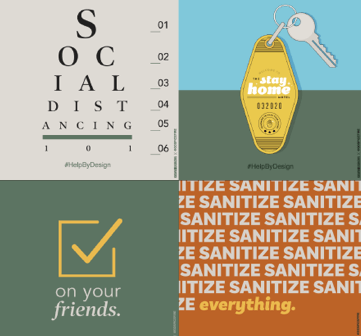From home loan applications to ordering cabs, there are challenger brands across every sector, offering quick, innovative and engaging solutions and putting big companies under pressure to evaluate how they serve their customers.

Photos by Youssef Naddam on Unsplash
Strategy
Get Real. For Real.
One of the things that sets the challengers apart from legacy corporations is the humanity of their approach. Instead of planning everything to nth degree in an effort to minimize risk, they’re more inclined to go with their intuition. Instead of forcing people into a pre-defined corporate template, they’re more likely to celebrate quirks and encourage original thinking. And instead of trying to figure out what their customers want through market research, they prefer to engage in real conversations with real people.
These are profound differences that the wiser big brands are already trying to adapt to. The challengers have shaken things up so much there’s no chance we’ll return to the way things used to be. But change is hard for big companies — especially this kind of fundamental cultural change — so how do they loosen up? How does a Big Co become more human and create customer intimacy?
These are profound differences that the wiser big brands are already trying to adapt to. The challengers have shaken things up so much there’s no chance we’ll return to the way things used to be. But change is hard for big companies — especially this kind of fundamental cultural change — so how do they loosen up? How does a Big Co become more human and create customer intimacy?
Getting to know all about you
One of the items at the top of the big company to-do list must be finding ways to develop the kind of intimate, authentic relationships challengers enjoy with their customers.
Take Megababe — the self-proclaimed line of ‘products that take the Ouch and the Ugh out of being a woman’ — which proudly states: “As women, we are perfectly imperfect. So why does the beauty industry turn a blind eye to our imperfections, and who decided certain topics are so ‘hush hush’ in the first place? We’re committed to keeping it simple, effective, non-toxic and of course chic so you can cross a couple grievances off your list, and do it in style. Because you’re too cute to chafe!”
Megababe followers are invited into the heart of the company through the eyes of founder Katie Sturino (@katiesturino), who engages freely on social media and provides raw, unfiltered glimpses into what it’s like being a woman without a thigh gap. That’s right — she’s flipping the table on taboo conversations like thigh chafe — which FYI is a real problem for millions of women, and don’t even get me started on boob sweat!
Her candid, raw, no-topic-is-off-the-table approach feels more like you’re talking with an unconditionally supportive girlfriend, than a product company. Which has in turn, inspired thousands of women to come forward and share their own experiences of why they’re #toocutetochafe. No wonder her deodorant, Rosy Pits, had a 13,000-person waitlist.
Take Megababe — the self-proclaimed line of ‘products that take the Ouch and the Ugh out of being a woman’ — which proudly states: “As women, we are perfectly imperfect. So why does the beauty industry turn a blind eye to our imperfections, and who decided certain topics are so ‘hush hush’ in the first place? We’re committed to keeping it simple, effective, non-toxic and of course chic so you can cross a couple grievances off your list, and do it in style. Because you’re too cute to chafe!”
Megababe followers are invited into the heart of the company through the eyes of founder Katie Sturino (@katiesturino), who engages freely on social media and provides raw, unfiltered glimpses into what it’s like being a woman without a thigh gap. That’s right — she’s flipping the table on taboo conversations like thigh chafe — which FYI is a real problem for millions of women, and don’t even get me started on boob sweat!
Her candid, raw, no-topic-is-off-the-table approach feels more like you’re talking with an unconditionally supportive girlfriend, than a product company. Which has in turn, inspired thousands of women to come forward and share their own experiences of why they’re #toocutetochafe. No wonder her deodorant, Rosy Pits, had a 13,000-person waitlist.
Too big to care?
This is all fine for a young challenger brand but how could a Big Co ever hope to achieve this level of customer intimacy? Surely, it’s a model that only works when you’re small and young?
Not necessarily. Look at how eyewear retailer Warby Parker continues to offer customers huge input into its new designs despite growing into a $1.75bn company.
The awkward truth is it’s an easy excuse for big companies to say they’re too complex to change. The real reasons a Big Co doesn’t work to forge more human bonds with its customers are cultural, not practical. Its risk-obsessed view of the world fills it with trepidation about opening up — and even if it manages to get past that, it struggles with authenticity. It’s easy for challengers to tell their stories because they’re passionate about them — passionate enough to start a company. But big companies often don’t have such interesting stories to tell. The reasons they launch products are less engaging and less personal.
Not necessarily. Look at how eyewear retailer Warby Parker continues to offer customers huge input into its new designs despite growing into a $1.75bn company.
The awkward truth is it’s an easy excuse for big companies to say they’re too complex to change. The real reasons a Big Co doesn’t work to forge more human bonds with its customers are cultural, not practical. Its risk-obsessed view of the world fills it with trepidation about opening up — and even if it manages to get past that, it struggles with authenticity. It’s easy for challengers to tell their stories because they’re passionate about them — passionate enough to start a company. But big companies often don’t have such interesting stories to tell. The reasons they launch products are less engaging and less personal.
Customer Intimacy: Real or virtual?
For all the cultural challenges presented by this shift, some corporate brands seem to be nailing it in both real and virtual worlds, effectively connecting customers’ in-store and online experiences and building closer relationships with them as a result — just look at Starbucks.
Through the Starbucks mobile app, customers scan their phones to buy coffees and earn app points. They also receive personalized marketing offers, which keeps them checking the app. And they become brand advocates too, by being given the option to send coupons and gifts via the app.
But Starbucks understands it must go beyond this, so it’s taught its employees — aptly referred to as partners — how to address people’s needs in an engaging way when they’re face to face. One example is the Starbucks ‘Latte Method’ they use to handle complaints: “We Listen to the customer, Acknowledge their complaint, Take action by solving the problem, Thank them, and then Explain why the problem occurred.”
Starbucks partners are also encouraged to learn the names and orders of their regular customers. Being greeted by your first name and an offer of ‘your usual’ is remarkably like the experience you’d expect in a little independent coffee shop — and makes Starbucks the kind of place you want to go back to again and again.
Through the Starbucks mobile app, customers scan their phones to buy coffees and earn app points. They also receive personalized marketing offers, which keeps them checking the app. And they become brand advocates too, by being given the option to send coupons and gifts via the app.
But Starbucks understands it must go beyond this, so it’s taught its employees — aptly referred to as partners — how to address people’s needs in an engaging way when they’re face to face. One example is the Starbucks ‘Latte Method’ they use to handle complaints: “We Listen to the customer, Acknowledge their complaint, Take action by solving the problem, Thank them, and then Explain why the problem occurred.”
Starbucks partners are also encouraged to learn the names and orders of their regular customers. Being greeted by your first name and an offer of ‘your usual’ is remarkably like the experience you’d expect in a little independent coffee shop — and makes Starbucks the kind of place you want to go back to again and again.
The burning platform of customer intimacy
The longer big companies leave it to follow the example of Megababe, Warby Parker and Starbucks, the harder the challenge is going to get. Thanks to the challengers — and the likes of Starbucks — customers have a growing expectation of openness and authenticity from their brands.
Risk aversion is no excuse for inaction. Failing to act means leaving the door open to the disruptors — if you’re not the one delighting customers in your sector, you can bet someone else will be eager to give it a shot. And that’s one risk every company should be very averse to.
Risk aversion is no excuse for inaction. Failing to act means leaving the door open to the disruptors — if you’re not the one delighting customers in your sector, you can bet someone else will be eager to give it a shot. And that’s one risk every company should be very averse to.
Let’s create something
big together.
We love collaborating through challenges, big and small. If you're looking for a true partnership, we'd love to hear from you.


